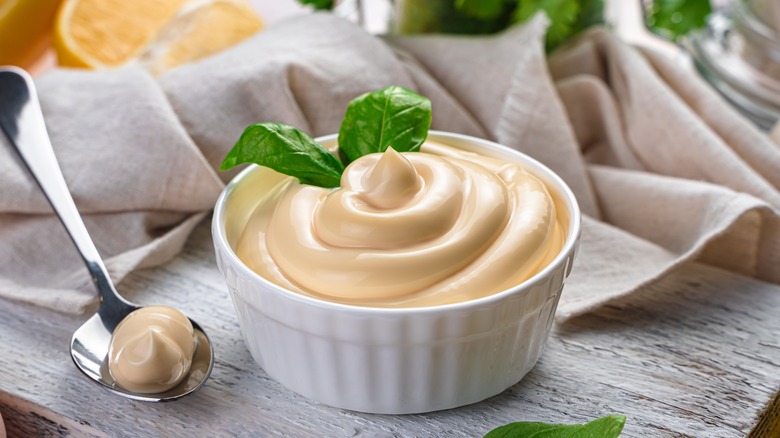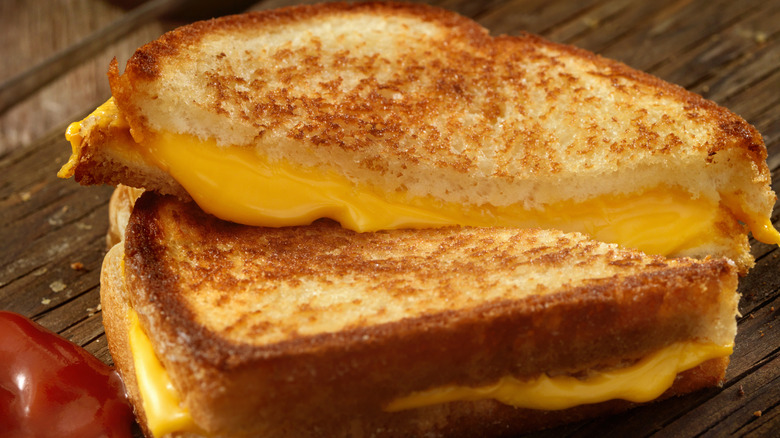Mayo Is An Excellent Binding Agent To Keep Meat Moist
Mayonnaise may be the most divisive condiment in America. There are plenty of people who sing its praises and can't imagine a sandwich without it, but there are just as many people who absolutely loathe the stuff with a burning passion. Maybe they're only around 20% of the population, but man, are they loud about how mayo is awful, yucky, terrible — the worst.
The thing a lot of mayo haters forget, though, is that even if you don't like mayo as a condiment on its own merits, it has vast applications in cooking and brings a lot more than just flavor to the table. It's not quite a French mother sauce (although some historical sources have listed it as a "cold mother sauce"), but mayo is up there in terms of cooking utility. And one of its best uses is as a binding agent in meat dishes.
The creamy condiment works to hold everything together. It's also essential for keeping the meat juicy and moist.
Mayo makes sense as a binding agent
When you really think about what it's made of, it's no secret why mayo functions as such an excellent binding agent. Mayo is an emulsion of egg, lemon juice, and oil (typically canola oil, but you can use olive oil if you want to be fancy). Eggs are the primary binding agent in many recipes, and mayonnaise serves the same purpose while adding a thick, sticky texture eggs lack. It makes perfect sense that it could not just be used as a replacement for eggs in a pinch but actually improve upon them in some cases.
That texture is going to help with breading your fried chicken or pork chops for the obvious reason that bread crumbs will stay glued to anything sticky, but there's a bonus — the thick coating keeps the meat's own juices trapped inside it rather than allowing them to leak out, as an egg wash can sometimes do. This leads to juicier meat, which is always the goal. You don't need to use a lot here if you're concerned about your food tasting like mayonnaise, but really, mayo has a mild enough flavor that you likely won't even be able to discern it. This is especially true for full-flavored meats like barbecued brisket, as Joe Martinez of Smokin' Joe's Pit BBQ in El Paso, Texas, is keen to share.
The versatility of mayo in cooking
The cooking applications of mayonnaise don't end there. The secret to the condiment is that it's basic enough and looks just enough like other products that it can serve many different purposes. Most people know by now that it can be spread on the outside of grilled cheese in place of butter, and many swear by it. Mayo also gets used as the base for a lot of other unique condiment creations; what we call "aioli" in America isn't actual aioli (an emulsion of garlic and olive oil), but instead different varieties of flavored mayonnaise, but that doesn't make them less delicious. It also has a significant potential role in baking — again, serving much the same purpose as eggs.
Basically, if you need to introduce fat into a dish without compromising its texture (as butter can sometimes do), mayonnaise is a great option. Its flavor is mild enough that it doesn't typically overpower things you put in — which is why it functions so well as a binding agent. You should probably be using it more often.


